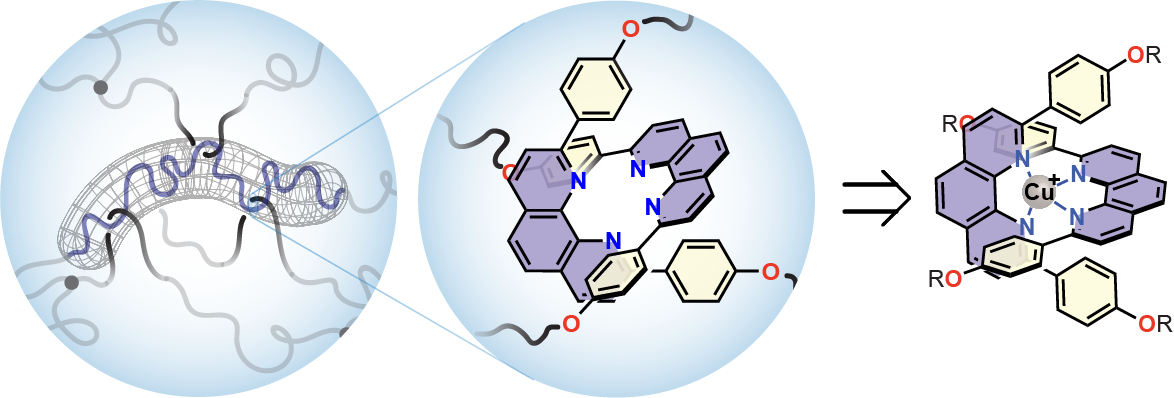Metathesis toward heteroatom-rich polymers
A comparison of some of the most abundant biological and synthetic polymers reveals a compositional dichotomy: the former feature backbones that are typically far more heteroatom-rich than the latter. The high heteroatom content is associated with well-defined shape/folding, which in turn enables emergent functions like catalysis and signaling. Inspired by this biological paradigm, we seek to develop new approaches to access abiotic nitrogen-rich polymer backbones with high precision. Toward this end, we are exploring metathesis of nitrogen-containing functional groups like carbodiimides and diazenes, which represent fundamental challenges in inorganic and organometallic chemistry.
Editing of polymer backbones
Polymer modification is one of the pillars of polymer science whose strategic significance stems from its divergence: from one scaffold, one could access vast new spaces of structures and properties. In this realm, the focus has by and large been on the side-chains and end-groups of polymers, whilst their backbones have received considerably less attention. Yet, the ability to precisely edit the backbone of a polymer could fundamentally transform its identity and associated properties, much like editing a sentence can radically change its meaning. Hence, our group is developing a broad scope of backbone editing methods as well as strategies to control their site-selectivity.
Templated entanglements in polymer networks
Trapped entanglements—topological crosslinks among polymer chains—are in many ways the dark matter of polymer networks: believed to be critical for holding a material together under applied load, they are challenging to detect directly and are known largely by their effects on the surrounding matter. We are exploring supramolecular chemistry as a central strategy to systematically vary the number density and topology of entanglements to, ultimately, understand how the local entanglement topology manifests itself in the mechanical properties of materials at the macroscopic scale.
Synthesis and assembly of conjugated polymers
Nanophotonics has game-changing potential for data processing and sensing applications. State of the art in this field is embodied by inorganic—primarily doped silicon—nanomaterials, whose utilization is limited by cost and scalability of their vacuum-based manufacture and processing. To address these limitations, we are developing conjugated polymer analogues which could be readily integrated into light-weight “smart” textiles, artificial skin of robotics, and sensors. En route to these goals, our research build fundamental knowledge surrounding both the synthesis and self-assembly of conjugated nanomaterials, which will serve as foundation for long-term advances in polymer nanotechnology.




